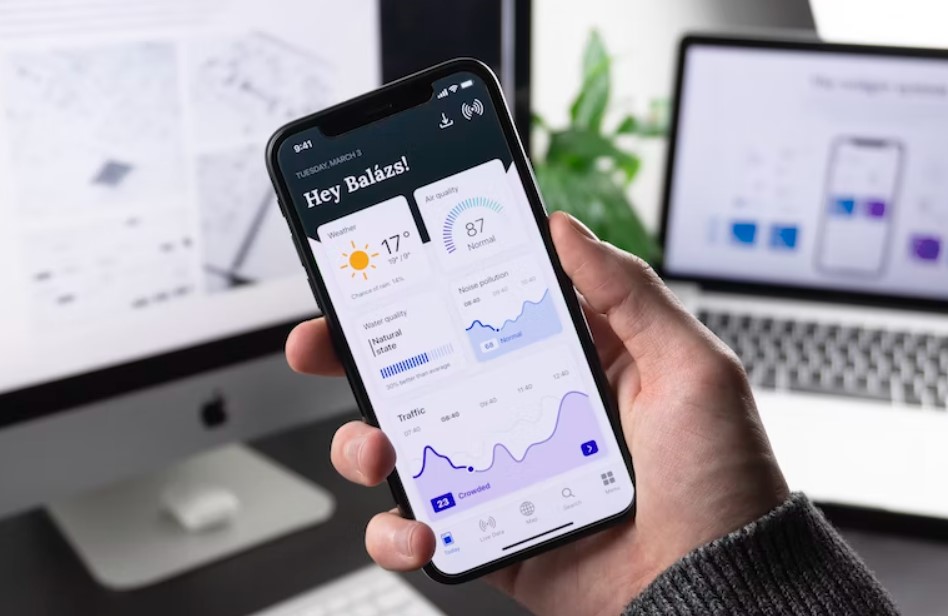Odoo Accounting Software: How to use it?
May 08, 2024
Table of contents
Quick Access

“All your business on a single platform” is Odoo's motto which can be read on its official website, this simply summarizes what this platform is: an ERP software prepared for multiple functions, such as sales, electronic invoicing, accounting, inventory, human resources, projects, CRM, e-commerce and much more.
Odoo, if you didn't already know, has special software for accounting, ideal to be implemented in the administration or accounting department of all types of industries and thus manage accounts easily and without errors.
In the official documentation, they explain “Odoo accounting software can improve the workflow of a department or an entire organization by allowing its users to have full access to their accounting data. A good accounting software system can be customized to automate specific processes and create a solution tailored to a specific business. In addition, the connectivity it provides can help manage a single or multi-company structure under a unified platform.”

How to use Odoo accounting software
Odoo is a complete set of business applications, including accounting software. Here is a general guide on how to use Odoo Accounting
Installation and configuration
- You need to install Odoo on your server or use their cloud service.
Set up your company profile and configure accounting settings such as chart of accounts, fiscal year, taxes, etc.
Creation of chart of accounts
- Customize your chart of accounts to fit your business needs.
- Add asset, liability, equity, income, and expense accounts.
Customer and supplier management
- Enter your customers and supplier's details in Odoo.
- This includes contact information, payment terms, and any other relevant details.
Transaction log
- Record all financial transactions such as sales invoices, purchase invoices, payments, receipts, etc.
- Odoo allows you to easily create and customize invoices.
Bank reconciliation
- Reconcile your bank statements with your accounting records in Odoo.
- Match transactions in Odoo to transactions on your bank statement to ensure accuracy.
Tax Management
- Set up the tax rates and rules applicable to your business.
- You must ensure that taxes are correctly applied to sales and purchases.
Reports
- Use Odoo's reporting features to generate financial reports like balance sheets, profit and loss statements, cash flow statements, etc.
- Customize reports to meet your specific requirements.
Integration with other modules
- Odoo Accounting integrates seamlessly with other Odoo modules such as sales, inventory, human resources, etc.
- This allows for a simplified business process where transactions are automatically reflected in the accounting system.

User permits
- Set user permissions to control access to sensitive financial information.
- Ensure that only authorized users have access to certain features and data.
Regular maintenance
- Periodically review and reconcile your accounts to ensure accuracy.
- Update your accounting records with any changes or new transactions.
Training and support
- Use Odoo training resources and support services to learn how to use the software effectively.
- There are also online communities and forums where users share tips and best practices.
Remember, while this guide provides an overview, the details of using Odoo Accounting may vary depending on your business requirements and the version of Odoo you are using. It is always a good idea to consult the official Odoo documentation or seek help from their support team for any specific questions or problems you may encounter.

Benefits of using Odoo accounting software
Odoo accounting software offers a host of benefits for businesses of all sizes. First, its integrated approach streamlines operations by consolidating multiple business functions into a single platform. This integration extends beyond accounting and encompasses modules for sales, inventory, human resources, and more.
Consequently, data flows seamlessly between different departments, reducing manual data entry and minimizing errors. This unified system provides real-time visibility into financial data, giving decision-makers accurate information to drive business growth.
Odoo Accounting, its official name, simplifies complex financial processes, making them accessible to users with different levels of experience. With intuitive interfaces and customizable workflows, tasks like invoicing, bank reconciliation, and tax management become simple. Automation features further improve efficiency, such as recurring invoices, automatic bank feeds, and scheduled reports.
By automating routine tasks, companies can save time and resources, allowing staff to focus on more strategic activities that add value to the organization.
Another of its benefits, perhaps the most important, lies in scalability. Its cloud-based architecture facilitates remote access, allowing teams to work together regardless of their location. Additionally, as business needs evolve, Odoo's modular structure allows for easy expansion.
Whether adding new users, integrating additional modules, or adapting workflows to accommodate growth, Odoo provides the flexibility to scale operations without interruption. This scalability ensures that companies can adapt to changing market conditions and take advantage of opportunities for innovation and expansion.
We recommend you on video
Related Blogs


Best Practices of an Android App Development Agency

Services from a Shopify Development Agency for the Retail Industry

What skills should an Android developer have to create a mobile app for the banking industry?
